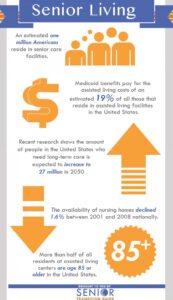Assisted living facilities play a vital role in providing care and support to elderly and disabled individuals. However, these facilities face numerous challenges in delivering high-quality care. From maintaining efficiency to ensuring the safety and well-being of their residents, assisted living providers have a lot on their plate. EMR software offers innovative solutions to address these challenges.
Understanding Assisted Living Challenges
To understand how EMR software can help assisted living facilities we first need to understand the challenges they face.
Fragmented Documentation
Assisted living facilities often rely on paper-based documentation. This leads to fragmented and inefficient record-keeping. Consequentially, accessing real-time patient information and coordinating care can be challenging.
Medication Management
Ensuring proper medication management can be a complex task in assisted living settings. Multiple medications, dosages, and administration schedules need meticulous organization and monitoring.
Resident Safety and Emergency Response
Assisted living facilities must prioritize resident safety. However, incidents such as falls or medical emergencies require immediate and efficient response mechanisms.
Care Coordination and Communication
Assisted living teams consist of various healthcare professionals, caregivers, and staff. Effective communication and care coordination are essential to deliver consistent and high-quality care.
EMR Software Transforming Assisted Living
Now that some challenges have been highlighted let’s see how EMR software aids in optimizing workflow.
Centralized Electronic Documentation
EMR software digitizes and consolidates resident records, creating a centralized repository accessible to authorized personnel. This fosters real-time updates, streamlined information sharing, and easy retrieval of critical patient data.
Medication Management and Alerts
Additionally, EMR systems offer medication management features, including reminders, alerts for missed doses, and medication interactions. These tools ensure accurate administration and minimize the risk of adverse events.
Resident Safety and Remote Monitoring
Moreover, EMR software can integrate with various health monitoring devices, allowing for remote tracking of vital signs and activity levels. This enables proactive health management and timely intervention in case of emergencies.
Care Coordination and Secure Communication
What’s more, EMR systems facilitate secure messaging and care team collaboration, streamlining communication and enhancing care coordination. This promotes the efficient exchange of information and timely decision-making.
Enhancing Resident-Centered Care
Personalized Care Plans
EMR software enables the creation of individualized care plans for each resident, incorporating their medical history, preferences, and goals. This ensures resident-centered care that meets specific needs and enhances overall well-being.
Activity Tracking and Health Management
Furthermore, EMR systems can track residents’ activities, health status, and participation in recreational programs. These insights help staff tailor activities, manage chronic conditions, and promote social engagement.
Quality Assurance and Compliance
EMR software offers tools to monitor and measure the quality of care provided. Assisted living facilities can use this data to implement quality improvement initiatives and ensure compliance with regulatory standards.
Cost-Efficiency and Resource Optimization
Streamlined Administrative Tasks
EMR software automates administrative tasks such as scheduling, billing, and reporting. This reduces paperwork, saves time, and optimizes resource allocation.
Enhanced Billing and Reimbursement
Assisted living facilities can utilize EMR systems to improve billing accuracy and facilitate reimbursement processes. Timely and accurate billing ensures financial stability and enables investments in better care and services.
Data Analytics and Performance Measurement
Finally, EMR software provides data analytics capabilities that help assisted living facilities identify areas for improvement and monitor performance metrics. Data-driven insights facilitate data-backed decision-making and resource optimization.








